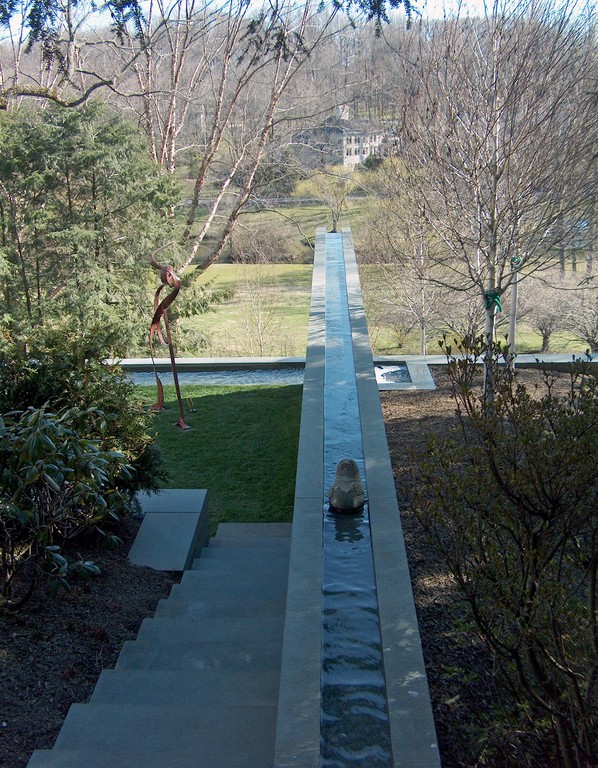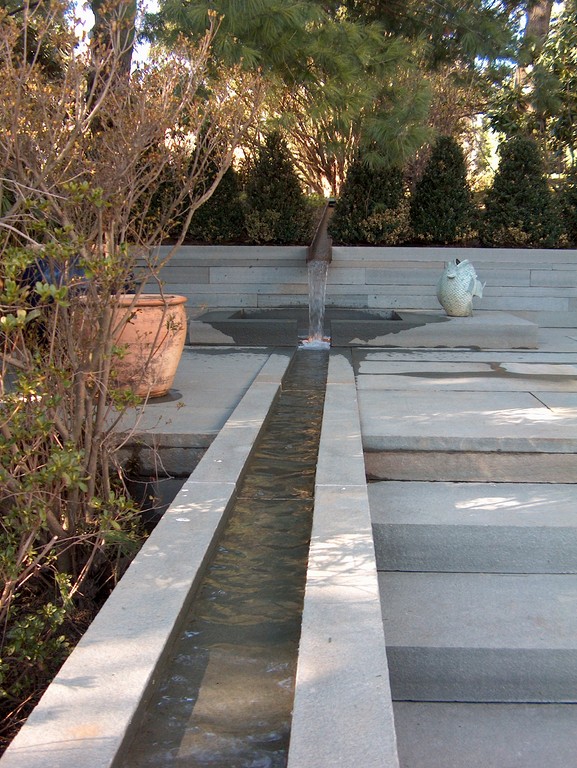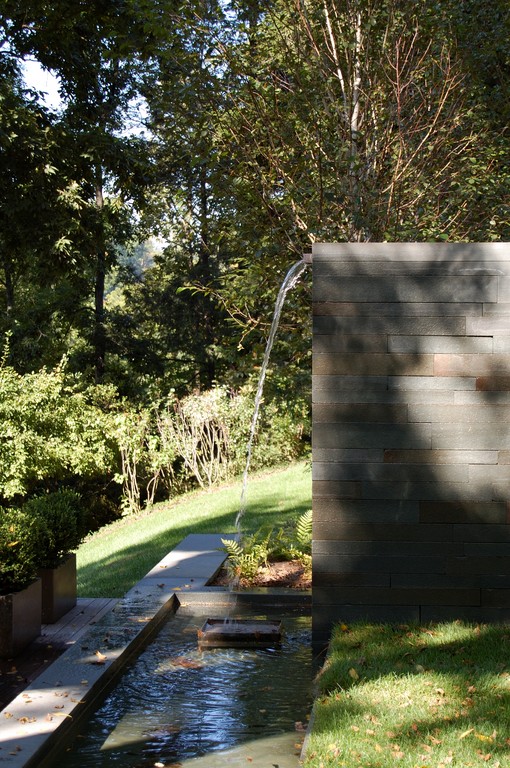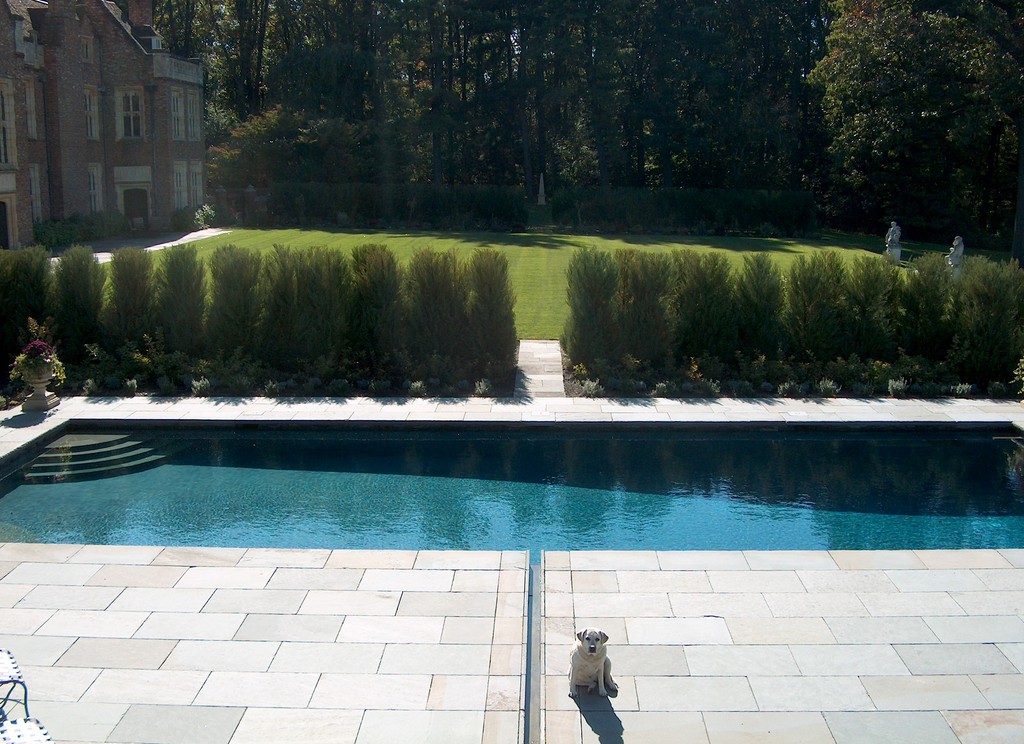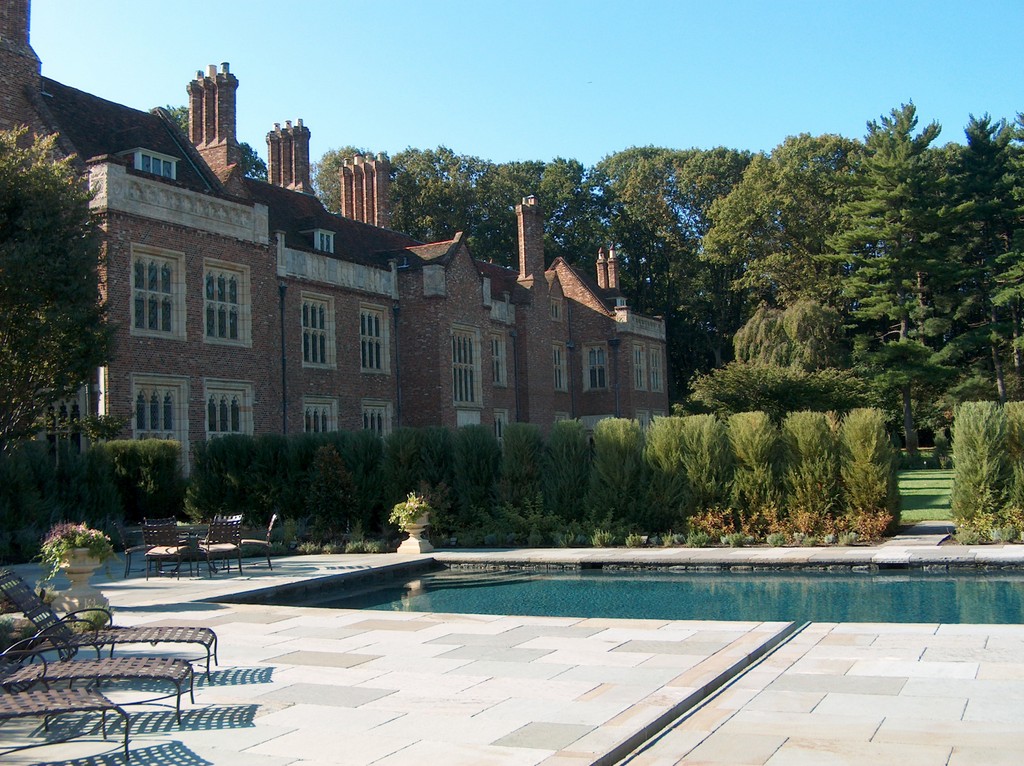The Subtlest Flows
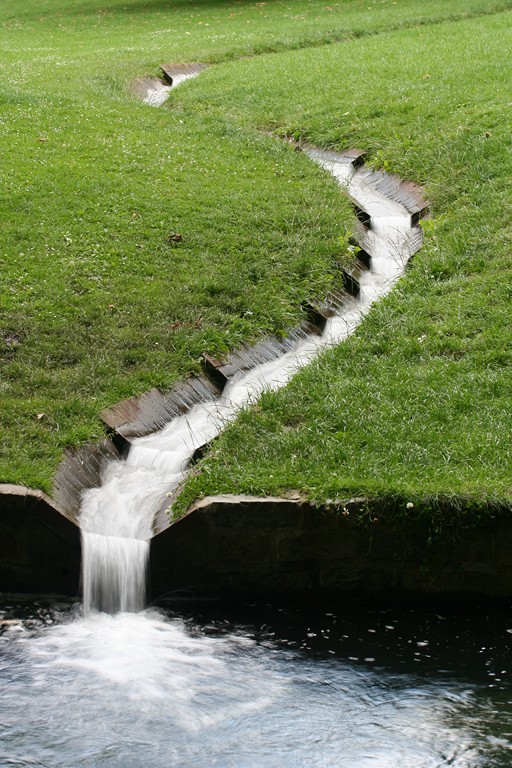
My dictionary defines a rill as a small stream cut by erosion. In the practice of watershaping, however, that colorful little word has been stretched to cover manufactured channels in which we artfully move water from one place to another.
These often-subtle effects have a history dating at least to the 5th Century BC, when Persian kings demonstrated their power over nature by using rills to bring water – a symbol of fertility as well as a practical means of cooling architectural spaces – from rivers and aqueducts to their palaces.
These early rills were observed and adopted by Muslim designers and engineers who rose to eminence in the Middle East more than a millennium later and were carried along as Islamic influence spread through India, North Africa and, eventually, Spain, where signature elements of Moorish architecture are still seen today in the famous Alhambra. From there, rills finally made their way into Europe, where they mutated and appeared in Renaissance palaces in Italy in the form of ornate water chains and staircases.
In the years since, rills have become part of the global vocabulary of watershaping. But where modern watershapers have been quick to pull other historic looks as rectangular reflecting pools and quatrefoil fountain basins into their designs, relatively few have turned to rills as another way to embrace the traditions of water design in their poolscapes and landscapes. And this is despite the fact that rills are not limited to use in traditional designs and can indeed be used in a wide range of styles and settings.
TIME AND MOVEMENT
As a designer, I see rills as a device we can use to build a measure of sensory rhythm into a landscape, basically because these features are so good at controlling the way someone’s eyes and body move through a space. In fact, rills are invaluable in that respect, simply because of the way flowing water attracts attention by creating sounds and animating a space.
We’ve also found them to be useful in drawing attention to architectural elements such as walls or staircases; in visually connecting points along an axial view; or in cutting paths through planted areas between bodies of water, thus conjuring an impression of connectedness even across relatively long distances between watershapes.
They also can be used to create a sense of mystery, captivating observers’ attention and leading them through a space to an unknown destination where they might find anything from a small pond to a grand swimming pool that might not be visible from upstream points in the rill’s course. I’ve seen them used as well to lead people through a landscape, stopping them at a point where the water gathers at a destination of some kind, whether for recreation or to enjoy a nice view.
| From historical roots in Islamic architecture through to ultramodern statements and classic garden architecture, rills have always lent the spaces they occupy a special sense of cool, inviting motion and subtle visual interest. |
In other words, rills create movement and pique the interest of those who follow their courses to find out where they’re going. As such, these features play to basic human nature: It’s quite normal to want to follow moving water to see where it goes, in much the same way as we like to follow natural streams to see where they’ll take us.
I’m no psychologist, but as a watershaper I know that rills tap into something fundamental and give me a way to manage and direct the way people experience a landscape. My observations show further that rills can influence the speed with which people move through a space: If a rill’s water moves swiftly, people tend to keep pace and stroll along at a good clip; if the flow is slow, they tend to move at more languid paces. In their own minimalist way, these rills are a surprisingly powerful means of connecting one point to another within a given space.
This sublime capacity they have to weave elements together within a space is, I think, the chief contribution rills make to watershaping. If you have a fountain in one area and a pond in another, for example, those things may seem completely separate. Simply by setting up a rill between them, you completely alter observers’ perception of the space, downplaying the physical separation of the bodies of water and giving people a sense of a grander system encompassing the entire landscape.
VARIATIONS ON THEMES
As was mentioned at the outset, rills come in many shapes and sizes and are adaptable to a broad range of styles. In some cases, the basic definitions get stretched and some might see one moving through a large vertical transition as a cascade or even a waterfall – or one moving across a level space as less of a rill and more of a stream.
In my work, I tend to think of rills as any water-in-transit system that is notably long and very narrow. And although they certainly might see applications in otherwise naturalistic designs, I also tend to think of them as having a distinctively architectural quality in the way they are designed and look.
I am comfortable as well in thinking of rills as covering vertical transitions of some kind, either in conjunction with steps, for example, or sloping lawns. In lots of cases, however, rills function admirably in flat spaces and do not need any sort of slope to work well. All it takes is adding water at one end and removing it at the other: The flow moves as the water seeks its level, either briskly on a slope or slowly on level terrain.
| While rills work well with formal architecture, they also shine when approached with a more whimsical attitude and serve beautifully in leading people where you want them to go – and at the pace you want to lead them as well. |
Rills also function either recessed into grades to move through a deck or across a lawn – or can be raised above grade either by just a few inches or several feet when set atop walls. They can be perfectly straight or wind in serpentine forms; can vary in width and depth; and may differ widely in materials of construction. Some have smooth bottoms that create silky-smooth flows, while others provide steps, shingles, cobbles or other obstructions to create surface turbulence.
They can transit spaces without any ornamentation other than the textures lent by the flowing water, but in other cases they can be formed to make artistic, sculptural or architectural statements. In the rills of Italian Renaissance palaces, for example, moving water and fixed forms work in concert, drawing attention to one another to create dramatic compositions of motion and stillness, light and shadow, permanence and transition.
Within all of these variations, the practical key to a rill’s appeal has to do with the speed at which the water moves and its volume. This is why, from the outset of a project in which a rill is part of the picture, I always work first to understand what we’re trying to achieve and never leave the characteristics or details of the water’s flow to chance. Moreover, I know that the homeowners’ sense of what they want is subject to change, so I always think of these systems as having a flow that can be adjusted within a working range to suit immediate or future needs.
In this way, rills become a tool in establishing a space’s moods. At times, for instance, clients might want a more aggressive flow through a rill to animate a waterfall on one end; contrariwise, there will be times when they’ll favor a more retiring presence and a gentler, slower-moving flow. All it takes to accommodate this range of desires is setting the system up with valves or variable-speed pumps.
THE PRACTICALITIES
Another consideration in rill design has to do with how water is introduced to and exits from the channel.
Again, there’s an almost limitless range of possibilities here. As with streams, however, I find it useful in most cases to conceal the source by setting up a welling pond of some kind as the headwaters. In contrast to naturalistic streams, however, it’s also possible with rills to make artistic statements by adding water in a clearly visible fashion, whether over a weir or from a spout. Likewise, rills can terminate in any number of ways, spilling into a pool, fountain or pond or cascading over a waterfall.
With any water-in-transit system, of course, comes a set of practical considerations. Water flowing through the system, for example, must have a place to go when the system shuts down. Depending on the length, width and depth of the rill, that volume can be considerable and, in a situation where the rill’s terminus is small relative to the rill’s dimensions, you may well need a surge tank to accept all the water. By contrast, if a narrow, shallow rill flows into a large pool or pond, there may be no concern about surge capacity at all.
There are also practical concerns related to debris, which rills can collect in abundance. With fast-flowing rills, there will be a tendency for debris to flow through the system, which is good; at the same time, as leaves flow swiftly through a rill, they become waterlogged and will sink very rapidly when they make their way into a pond, pool or fountain, which isn’t so good.
By contrast, if the rill is slow moving, it’s safe to assume that debris will collect and build up and that you need to make provisions for periodic cleaning. In using such a rill in a heavily wooded area, there’s also a concern that debris can build up quickly – and to such an extent that the channel will clog to the point where water will spill over the rill’s sides and might cause serious damage.
Finally, you need to consider the possibility that a grade-level rill can become a pedestrian trip hazard. This issue obviously limits the use of rills in commercial applications, but in many settings the difficulty can be overcome by either raising the rill above grade or using an edge treatment that helps identify the hazard and prevent problems. And in any event, these are possibilities that must be discussed with the client early in the design process.
Once these features enter your design vocabulary, they can be used in an endless number of ways – linking indoor and outdoor spaces, drawing attention to sculptures and architectural details or leading to hidden retreats, for example. They may be used as well to introduce the comforting sounds of moving water or mask traffic noise. The only real limit to these applications is the imagination of the watershaper.
Rills will probably never be a dominant presence in any space they occupy, but as the three projects illustrated on the following pages show, they weave through designs in wonderful ways, lending a continuity that adds considerably to the enjoyment homeowners and their guests will find in experiencing these landscapes.
Robert Nonemaker is co-owner of Outerspaces, Inc., a business he started with his brother David at the age of 12. After a college career during which he studied construction management, communications, engineering and business, he decided to resume his work in the landscaping business. Shortly thereafter, he added watershaping to their array of services, and it now dominates the brothers’ business, which now employs 27 people and specializes in large, ultra-high-end, technically complex residential pool, fountain and landscape construction projects. He is also owner of Robert Nonemaker Exterior Design, a firm that offers design and construction consulting to architects and landscape architects throughout the country.
















